Churchill's Wizards (55 page)
Read Churchill's Wizards Online
Authors: Nicholas Rankin

Let the author lay some personal cards on the table at the end of the book. My thoughts about camouflage, deception and propaganda are not quite the same as when
Churchill's Wizards
was first commissioned. Of course, deception is everywhere and we all practise it to some extent. Only adolescents are indignant at the white lies that politeness demands; there's deception all through nature and in great art as well. I have loved actors' performances all my life, yet we in the audience know they are not real, and willingly suspend our disbelief. Similarly, deception in warfare is not like deception in civilian life. War is an extraordinary state that changes the normal rules: a crime like killing may become a duty. Deception or deceitfulness in ordinary life is wrong because it corrodes trust, the basic glue of human relationships, but deceiving your enemy in wartime is common sense. If the war is just, then deception is also justified, because strategems increase your chance of victory many times over.
Whenever I told anybody I was writing a book about British military deception they always said, âThat's interesting.' We are interested in deception because we know we all do it when we have to, and we all feel ambivalent about it. The primal warrior/deceiver in Western literature, Odysseus, deviser of the wooden horse gambit at Troy, displays
metis
, cunning or intelligence, in order to get back to protect his wife and child. We understand that, in a fight for survival, his ends justify his means.
But in real life we have to make continuing moral judgements on which ends justify which means. It happened that my last book,
Telegram from
Guernica, was published just three weeks after the âshock and awe' attacks on Baghdad in March 2003. These were the opening salvoes of a war based on government claims that Iraq had weapons of mass destruction and was prepared to use them against us. Since then, in the years I have been working on
Churchill's Wizards
, the word âdeception' has been hanging in the air like a bad smell.
There is a difference between this twenty-first-century deception and those of WW1 and WW2 that you have been reading about. What C. E. Montague predicted in
Disenchantment
has come true. This time,
the deceptive âstory' was aimed at our own people, on the brink of a possibly illegal war, and not at the despotic enemy. Moreover, it did not fool anyone for long.
When a leader says that Gamal Abdel Nasser or Saddam Hussein or someone else is another Adolf Hitler, this does not make the speaker a new Winston Churchill. Other wars are not WW2; metaphors do not confer reality. The USA is not âour oldest ally' as a British politician stated in 2008 (Portugal is); nor is the Anglo-American alliance the same as six decades ago. We have lost what moral high ground there was in WW2. The three trillion dollar war in Iraq has been a propaganda disaster for âthe good guys'.
Winston Churchill knew from grim experience that âjaw-jaw was better than war-war' and when toasts were drunk, used to add under hisbreathâ⦠and no war'. He was also a great parliamentarian, âbrought up', as he told his beloved House of Commons on 29 November 1944, ânever to fear the English democracy, to trust the people' â who duly threw him out of office eight months later. Although as a wartime Prime Minister Churchill sometimes bent the truth when addressing the nation, what he and his wizards achieved by deceiving the Axis powers is indisputably justified.
History will judge our generation.
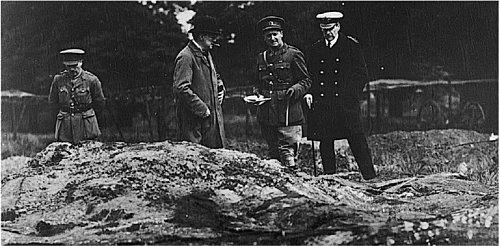
1 Winston Churchill (with cigar, as Minister of Munitions) in the British Army School of Camouflage's training trenches in Kensington Gardens, 1917. He is inspecting a new armoured dome for a machine-gun post, which is concealed by painted cloth.
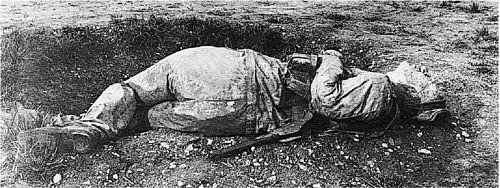
2 Dummy dead German from the Camouflage School. Some fakes were used as sniper hides; others, in captured uniforms, were placed in no-man's-land and their limbs moved by wire. Anyone deceived into rescuing such âwounded' men would be ambushed.
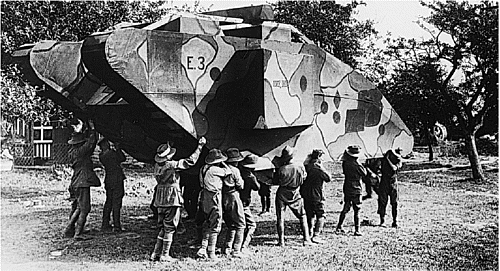
3 Australian troops carrying a wood and canvas dummy British Mark 1 Tank in France in 1917. Decoy tanks in disruptive pattern camouflage were used to draw enemy shell-fire or to add a false impression of strength to a feint attack.

4 The legendary âLawrence of Arabia', Captain T. E. Lawrence, photographed above Feisal's camp at Wejh early in 1917, wearing Arab clothing and a western wristwatch. The archaeologist and intelligence officer was a key liaison between British forces and the Arab revolt against the Ottoman Turks, pioneering new forms of guerrilla warfare.
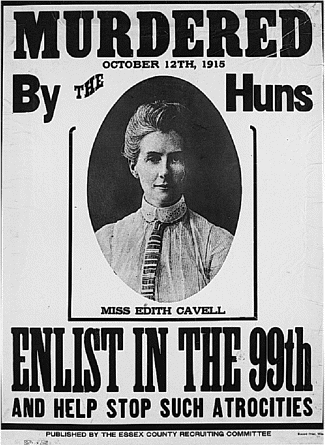
5 Propaganda in war. The German execution by firing-squad of Nurse Edith Cavell in Belgium was used in this 1916 Canadian poster as an emotional spur to recruitment. She was tried for the crime of helping British, Belgian and French soldiers escape into neutral Holland. But was the Norfolk spinster quite what she seemed, and was her death actually an atrocity?
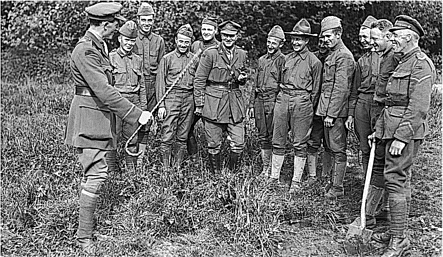
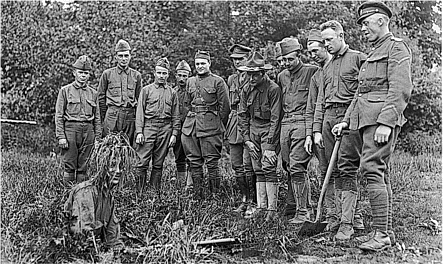
6 & 7 American 77th Division soldiers learning field camouflage at a British school for scouts, observers and snipers in France, May 1918. The instructor with the walking stick has brought them right up to a concealed sharpshooter who reveals himself in the second picture.
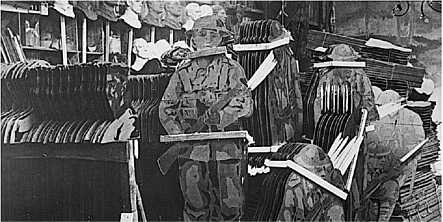
8 Stacks of silhouette figures used in the fake or âChinese' attacks of trench warfare. When erected by pulley in half-light they diverted enemy attention and helped to waste his ammunition. The papier-mâché heads behind were painted and dressed realistically, then raised above a trench parapet in order to lure enemy snipers into giving away their positions by shooting at them.
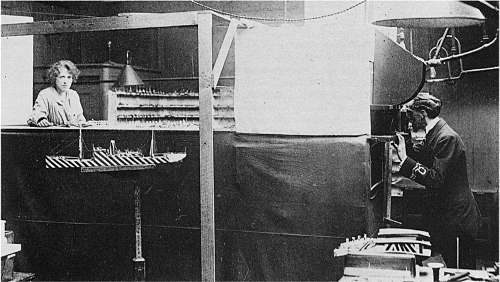
9 A special studio set up by marine artist Norman Wilkinson at the Royal Academy of Arts, Burlington House, London, during WW1. Models of âdazzle-painted' ships were placed on a turntable and then viewed through a submarine periscope to test whether their visual effect was deceptive. Successful patterns were then transferred by âartist-officers' to real ships in dockyards.
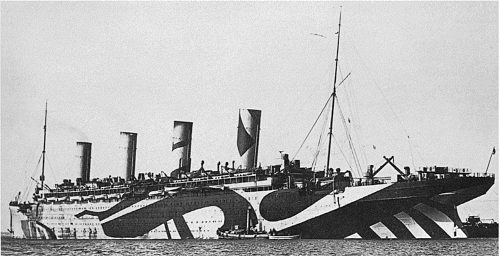
10 âThe object of camouflage is to give the impression that your head is where your stern is.' SS
Olympic
, painted in ârazzle-dazzle', is seen from the port stern quarter. German U-boats were taking such a toll on shipping in 1917 that anything which might divert the aim of a submarine commander firing a torpedo had to be tried.
